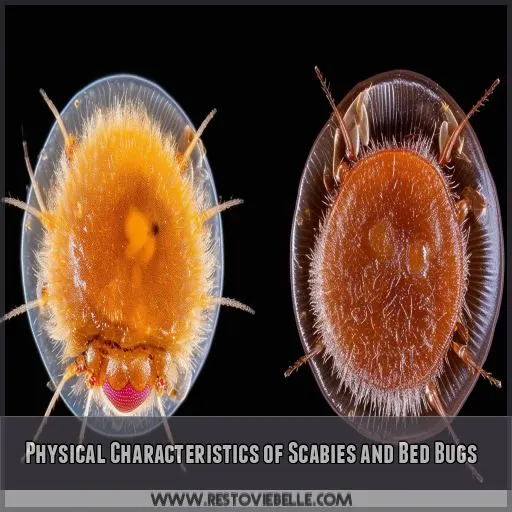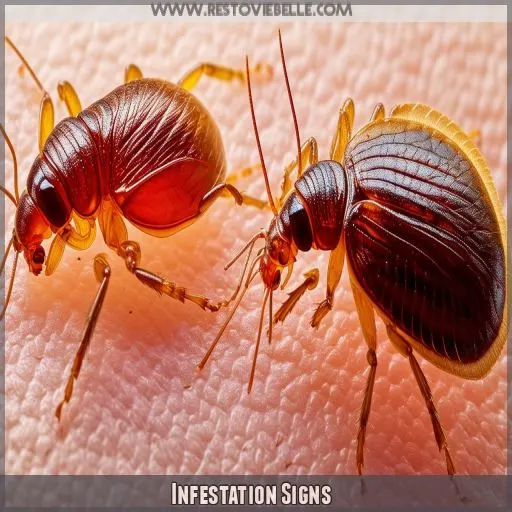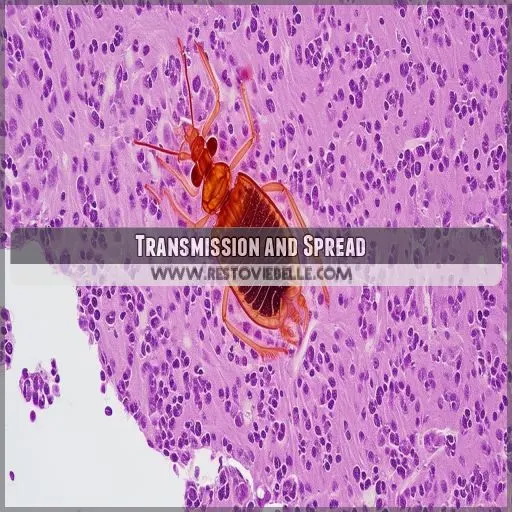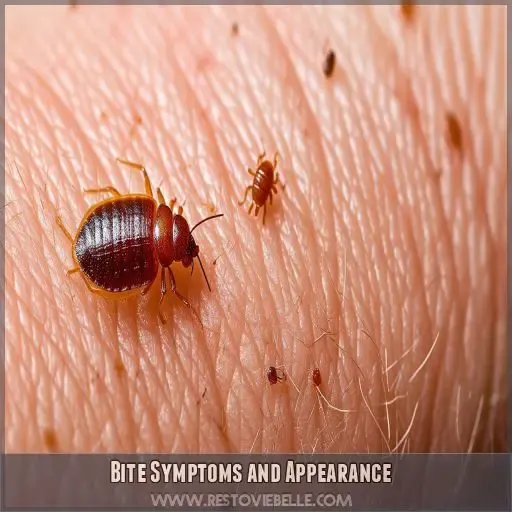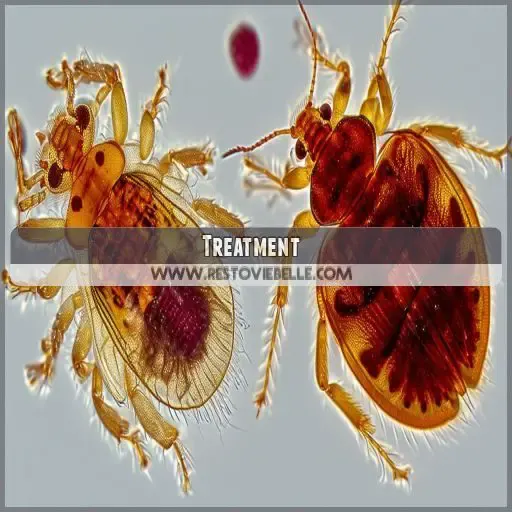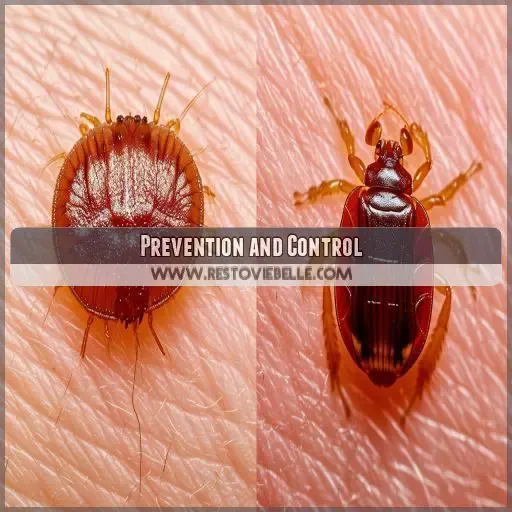This site is supported by our readers. We may earn a commission, at no cost to you, if you purchase through links.
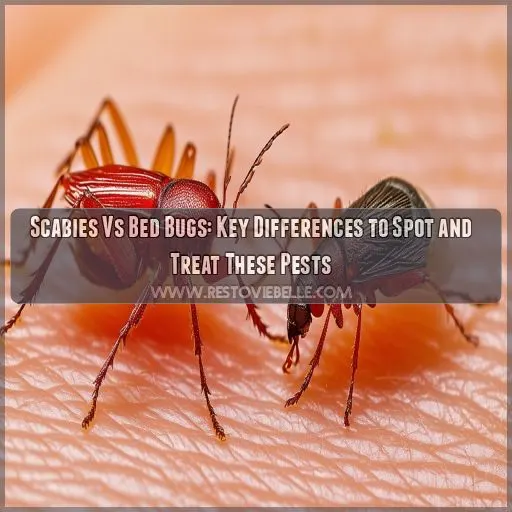 Differentiation between the two is very important in treating the conditions appropriately. Although these insects are similar in some ways, they have the following differences: appearance, behavior, and transmission.
Differentiation between the two is very important in treating the conditions appropriately. Although these insects are similar in some ways, they have the following differences: appearance, behavior, and transmission.
You will be introduced to the identification of scabies mites that burrow into skin and bed bugs, visible blood-sucking insects. We’ll take a closer look at the distinct signs of their infestation, symptoms of bites, and the prescribed treatment.
You will learn about the distinguishing features that reflect what sets scabies apart from bed bugs, therefore be more capable of detecting, preventing, and addressing these pesky infestations rapidly and effectively.
Table Of Contents
- Key Takeaways
- Physical Characteristics of Scabies and Bed Bugs
- Infestation Signs
- Transmission and Spread
- Bite Symptoms and Appearance
- Treatment
- Prevention and Control
- Frequently Asked Questions (FAQs)
- How do I tell if I have scabies or bed bugs?
- What do scabie bites look like?
- Can you see scabies on your bed?
- What kills scabies and bed bugs?
- Can pets transmit scabies or bed bugs to humans?
- How long can bed bugs or scabies mites survive without feeding?
- Are certain people more susceptible to scabies or bed bug infestations?
- Can scabies or bed bugs spread diseases to humans?
- How do climate and temperature affect scabies and bed bug populations?
- Conclusion
Key Takeaways
- Scabies mites burrow into the skin, while bed bugs are visible insects that feed on blood.
- Scabies causes intense itching and burrow-like rashes, while bed bug bites appear as clustered, red welts in zigzag patterns.
- Scabies is treated with prescription topical creams, while bed bugs often require professional pest control services.
- Regular inspections, effective cleaning, travel precautions, and natural repellents can help prevent and control both scabies and bed bugs.
Physical Characteristics of Scabies and Bed Bugs
You’ll find bed bugs to be small, flat, reddish-brown insects measuring about 4-5 mm in length. These pests prefer to hide in crevices, mattresses, and furniture near sleeping areas, emerging at night to feed on human blood.
Appearance and Size
You’ll need a keen eye to spot these tiny invaders. Scabies mites are microscopic, burrowing into your skin unseen. Bedbugs, though small, are visible to the naked eye. Both leave telltale signs: red bites, skin irritation, and unwelcome guests in your bed.
Bed Bugs: Small, Flat, Reddish-brown Insects, 4-5 Mm Long
You’ll spot bed bugs as small, flat insects with reddish-brown bodies. They’re about 4-5 mm long, roughly the size of an apple seed. These blood-suckers leave telltale bites and can quickly turn into a full-blown infestation if not caught early.
Habitat and Behavior
In contrast to this, the itch mites of scabies burrow into your skin, forming typical rows and rashes. Their favorite places to live are warm and humid areas on your body, while bed bugs prefer mattress crevices.
Both feed on blood, although the life cycle of scabies takes place on your body. Therefore, preventive measures against their infestation are very important to keep you safe.
Infestation Signs
You’ll notice distinct signs of infestation for bed bugs and scabies. For bed bugs, look for reddish marks on bedding, dark spots (excrement), eggs or eggshells, and yellowish skins, while scabies infestations typically present with severe itching (worse at night), tiny bumps or blisters, a patchy rash, and scales on the skin.
Bed Bugs:
You’ll spot bed bug infestations by noticing reddish marks on bedding and dark spots of excrement. Look for eggs, eggshells, and yellowish skins.
Bed bug bites appear as itchy, red welts in zigzag rows or clusters of 3-5 anywhere on your body.
To control the infestation, use antihistamines, calamine lotion, or prescription medication. Machine wash infested items and consider professional bed bug treatment for effective prevention.
Scabies:
While bed bugs are visible pests, scabies are microscopic mites with burrowing capabilities.
You’ll notice severe itching, especially at night, as these tiny creatures make your skin their home. Look for patchy rashes, tiny bumps, or blisters. Scaly skin and reddish lines might also appear.
If you suspect scabies, don’t panic. Treatments like prescription creams, oatmeal baths, and cool water soaks can help soothe skin-related issues.
Transmission and Spread
Bed bugs spread through direct contact with items already infested, such as luggage, furniture, and mattresses, while scabies mites do through direct skin-to-skin contact or sharing clothing items and bedding. Knowing the differences in mode of transmission is important; while bed bugs are able to rapidly infest spaces through passive transportation, scabies requires closer human interaction to spread.
Transmission: Luggage, Furniture, Clothes
You’re not out of the woods yet! Bed bugs can hitch a ride on your luggage, furniture, and clothes. Be vigilant during travel and practice thorough inspection techniques to prevent these sneaky hitchhikers from invading your home.
Spread: Through Contact With Infested Mattresses, Headboards
While bed bugs can hitch a ride on luggage, they primarily spread through contact with infested items. You’re at risk when:
- Sleeping on contaminated mattresses
- Using infected headboards
- Sharing bedding in hotels or hostels
Transmission: Direct Skin-to-skin Contact, Clothing/bedding
While bed bugs spread through infested objects, scabies transmission is more direct. You can get scabies through skin-to-skin contact or shared clothing and bedding. Here’s a breakdown of transmission methods:
| Transmission Method | Bed Bugs | Scabies |
|---|---|---|
| Skin contact | No | Yes |
| Shared clothing | Yes | Yes |
| Shared bedding | Yes | Yes |
| Furniture | Yes | No |
| Sexual contact | No | Yes |
Spread: Through Close Contact, Shared Items
Unlike bedbugs, scabies spreads through prolonged skin-to-skin contact. You’re at risk when:
- Sharing beds or clothes
- Having intimate contact
- Living in crowded conditions
- Caring for infected individuals
Always practice good hygiene to prevent transmission.
Bite Symptoms and Appearance
You’ll notice distinct differences in the appearance of bed bug and scabies bites on your skin. Bed bug bites typically form blotchy, itchy rashes on exposed areas, while scabies causes streakier, scalier rashes that often affect armpits, stomach, and genitals, with irregular rows or tunnels visible in skin folds.
Appearance: Blotchy, Itchy Rashes on Exposed Skin
You’ve identified the pests, now let’s focus on their bite symptoms. Bed bugs and scabies both cause itchy rashes, but their appearance differs:
| Characteristic | Bed Bugs | Scabies |
|---|---|---|
| Rash Type | Blotchy | Streaky |
| Affected Areas | Exposed skin | Warm, moist areas |
| Itching | Moderate | Intense |
Understanding these differences aids in proper diagnosis and treatment.
Irregular Rows (tunnels), Folds in Skin, Reddish/skin-colored Lines
You’ll notice irregular rows or tunnels in your skin, often accompanied by reddish or skin-colored lines. These telltale signs of scabies are caused by the microscopic mites burrowing beneath your skin’s surface, feeding on your body fluids.
Here’s what to look out for:
- Thin, wavy lines between fingers or in skin folds
- Intense itching, especially at night
- Small, red bumps that may resemble insect bites
Appearance: Streakier, Scalier Rashes, Commonly Affecting Armpits, Stomach, Genitals
You’ll notice scabies rashes are streakier and scalier than bed bug bites. They often appear in warm, moist areas like armpits, stomach, and genitals. To prevent spread, avoid skin contact and shared items. For mite eradication, consult a doctor for proper treatment of this irritating skin condition.
Treatment
You’ll need different approaches to treat bed bugs versus scabies infestations. While bed bugs often require professional pest control services and can be difficult to eliminate, scabies can typically be treated with prescription topical creams that eliminate the mites within days.
Hydrocortisone Cream, Antihistamines, Prescription Medication
You’ll find relief with hydrocortisone cream and antihistamines for bed bug bites. For scabies, your doctor may prescribe permethrin or ivermectin. Follow dosage recommendations carefully. Over-the-counter options can help manage side effects, but long-term use may have risks. Consider alternative treatments if standard options fail.
Difficult to Contain, Require Professional Pest Control
You’ll find bed bugs notoriously difficult to contain. DIY extermination often falls short, making professional treatment essential. Pest management experts use specialized techniques and products to tackle these resilient pests. Don’t underestimate the importance of infestation prevention – it’s your best defense against these stubborn invaders.
Eliminated in Days With Topical Cream
You’ll find scabies elimination much easier than bed bug control. Topical treatments like permethrin cream can eradicate these mites within days. Apply the cream as directed, and you’ll see quick results. Remember, prevention strategies and home remedies can complement these effective elimination methods.
Prevention and Control
To prevent and control scabies and bed bugs, you’ll need to be vigilant and proactive. Here are four essential steps to keep these pests at bay:
- Regular inspections: Check your bedding, furniture, and luggage for signs of infestation.
- Effective cleaning: Vacuum frequently and wash bedding in hot water to eliminate potential hiding spots.
- Travel precautions: Inspect hotel rooms and keep luggage off the floor to avoid bringing unwanted guests home.
- Natural repellents: Try DIY treatments like tea tree oil or lavender to deter pests naturally.
Frequently Asked Questions (FAQs)
How do I tell if I have scabies or bed bugs?
You’re itching to know what’s bugging you? Check for telltale signs. Bed bugs leave clustered, red welts in zigzag patterns. Scabies causes intense itching and burrow-like rashes, especially in skin folds. Look closely and you’ll scratch that mystery.
What do scabie bites look like?
You’ll notice small, reddish bumps or blisters on your skin, often in a line or track pattern. They’re intensely itchy, especially at night, and commonly appear in skin folds or between fingers. Don’t scratch – it’ll worsen the condition.
Can you see scabies on your bed?
You can’t see scabies on your bed. These microscopic mites burrow into your skin, not your bedding. However, you might notice tiny red spots on sheets from crushed mites or their droppings after scratching.
What kills scabies and bed bugs?
You’ll need different treatments for scabies and bed bugs. For scabies, use prescription permethrin cream. For bed bugs, try heat treatments or insecticides. Both require thorough cleaning of your environment. Don’t forget to treat all household members.
Can pets transmit scabies or bed bugs to humans?
Know this? Ninety percent of animal-related infestations are from fleas and not scabies or bed bugs. You rarely would get scabies from them because it’s species-specific. Bed bugs may hitch a ride with your furry friends, so regular checks are important.
How long can bed bugs or scabies mites survive without feeding?
You’ll be surprised how long these pests can hang on! Bed bugs can survive up to a year without feeding, while scabies mites only last 2-3 days off a human host. Don’t let your guard down!
Are certain people more susceptible to scabies or bed bug infestations?
You’re more susceptible to scabies if you’ve weak immunity or live in crowded conditions. For bed bugs, it’s not about susceptibility; they’ll feast on anyone. Your travel habits and surroundings play a bigger role in attracting these pests.
Can scabies or bed bugs spread diseases to humans?
While bed bugs don’t typically transmit diseases, you’re not completely off the hook. Scabies, on the other hand, can lead to secondary bacterial infections if you scratch too much. Stay vigilant and seek treatment promptly if you suspect either.
How do climate and temperature affect scabies and bed bug populations?
Did you know? A 1°C rise in temperature can increase bed bug populations by 17%. Climate affects both pests differently. Warmer temps accelerate bed bug growth, while scabies thrive in humid conditions. You’ll need different strategies for each.
Conclusion
Like a detective examining clues, you’ve now learned to spot the key differences between scabies and bed bugs. Armed with knowledge about their appearance, behavior, and transmission, you’re better equipped to identify and address these pests.
Stay vigilant, act quickly, and don’t hesitate to seek professional help when needed.

